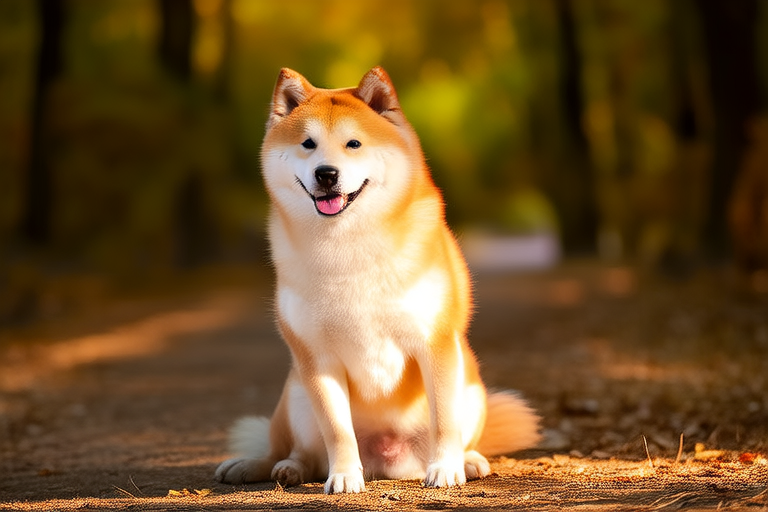Shiba Inus: The Ultimate Guide for First-Time Dog Owners
Introduction to Shiba Inus
Welcome to the wonderful world of Shiba Inus! If you’re a first-time dog owner considering this breed, you’re in for a treat. Shiba Inus are small, compact dogs that have been around for centuries. Known for their fox-like appearance and independent nature, they make loyal companions. This guide will help you understand everything from their origins to how to care for them, ensuring you and your Shiba Inu live happily together.
Origin and History
The Shiba Inu originated in Japan, where they were bred as hunting dogs. Their name, “Shiba,” means “brushwood” in Japanese, referring to the dense undergrowth of the forests where they hunted. These dogs are one of the oldest breeds in Japan, dating back over 300 years. Despite nearly becoming extinct during World War II, thanks to the efforts of dedicated breeders, the Shiba Inu has made a strong comeback and is now a popular choice for families around the world.
Physical Characteristics
Shiba Inus are known for their distinctive appearance. They typically stand between 14 and 17 inches tall at the shoulder and weigh between 17 and 23 pounds. Their double coat is thick and stands out, providing excellent insulation against cold weather. The outer coat is coarse, while the undercoat is soft and dense. Their most striking feature is their red or red sesame fur, often accompanied by black tips on their ears, tail, and legs. They also come in cream and black sesame colors. Their almond-shaped eyes give them a fox-like appearance, adding to their charm.
Temperament
Shiba Inus are independent and can be stubborn at times, which may require patience when training. However, they are also very affectionate with their families and enjoy being part of the household. They are generally reserved with strangers but can be very protective of their loved ones. Early socialization is crucial to ensure they grow up to be well-rounded and friendly dogs. While they may not always seek constant attention, they do appreciate companionship and enjoy playtime.
Common Health Issues
Like all breeds, Shiba Inus are prone to certain health conditions. Some common issues include hip dysplasia, patellar luxation, and progressive retinal atrophy. Regular check-ups with a veterinarian are essential to monitor their health and catch any potential problems early. Providing a balanced diet and maintaining a healthy weight can also help prevent some of these issues.
Dietary Needs
A proper diet is vital for your Shiba Inu’s overall health. High-quality dog food that meets their nutritional needs is recommended. Look for food that contains real meat as the primary ingredient and avoids artificial preservatives and fillers. Consult with your vet to determine the appropriate amount of food based on your dog’s age, weight, and activity level. Fresh water should always be available, and avoid giving them human food, especially those that are harmful to dogs like chocolate, grapes, and onions.
Grooming Needs
Shiba Inus have a double coat that requires regular grooming to keep it healthy and free of mats. Brush them at least once a week, increasing to daily brushing during shedding season. Bathing should be done only when necessary to avoid stripping their natural oils. Nail trimming, ear cleaning, and dental hygiene are also important aspects of their grooming routine. Regular visits to a professional groomer can help maintain their coat and ensure they look their best.
Exercise Requirements
Shiba Inus are active dogs that need regular exercise to stay healthy and happy. Daily walks and play sessions are ideal. They enjoy running and playing fetch, making outdoor activities perfect for them. However, due to their small size, long walks may not be necessary; shorter, more frequent sessions can suffice. Mental stimulation is equally important, so consider puzzle toys or interactive games to keep their minds engaged.
Training Tips
Training a Shiba Inu requires patience and consistency. Positive reinforcement methods work best, rewarding good behavior with treats and praise. Start training early to establish boundaries and expectations. Socialization is key to helping them become comfortable with different people, animals, and environments. Basic commands like ‘sit,’ ‘stay,’ and ‘come’ are essential and should be taught in a calm, controlled environment. Consistency and patience are crucial, as Shiba Inus can be independent and may take longer to learn than other breeds.
Socialization Techniques
Early socialization is crucial for Shiba Inus to develop into well-adjusted adults. Expose them to various people, animals, and environments from a young age. Puppy classes are an excellent way to introduce them to other dogs and positive experiences. Encourage positive interactions and reward good behavior. This helps build confidence and reduces the likelihood of fear or aggression towards unfamiliar situations.
Integrating into Family Life
Bringing a Shiba Inu into your family requires careful planning. Create a safe and comfortable space for them, including a designated sleeping area. Establish routines for feeding, walking, and playtime to provide structure. Children should be taught how to interact gently and respectfully with the dog. Supervision is essential during interactions, especially with young children. Gradually introduce the dog to family members and friends to ensure they feel secure and welcome.
Resources for Further Learning
Becoming an informed owner is key to successfully raising a Shiba Inu. Books, online forums, and local clubs can provide valuable information and support. Consider joining a Shiba Inu-specific group or club where you can connect with other owners who share your passion. Local veterinarians and trainers can also offer personalized advice tailored to your dog’s unique needs.
